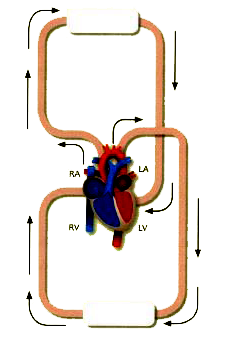Deep temperate lakes undergo circulation
Once
Twice
Thrice
Four times.
The correct Answer is:B
Step-by-Step Solution:
1. Understand the Concept of Circulation in Lakes:
- Circulation in lakes refers to the movement of water within the lake, which is essential for nutrient distribution and temperature regulation.
2. Identify the Types of Circulation:
- In deep temperate lakes, circulation is often referred to as "lake turnover." This process involves the mixing of water layers.
3. Recognize the Layers of Water:
- Lakes have different layers based on temperature and density:
- Epilimnion: The upper layer of the lake, which is warmer and has lower density.
- Hypolimnion: The deeper layer, which is colder and has higher density.
4. Seasonal Changes Affecting Circulation:
- In summer, the epilimnion is warmer and less dense, while the hypolimnion is colder and denser.
- In winter, the situation reverses: the epilimnion becomes colder and denser, while the hypolimnion remains warmer and less dense.
5. Determine the Number of Circulations:
- Due to the seasonal changes, deep temperate lakes undergo circulation twice a year: once in summer and once in winter. This results in two distinct turnover events.
6. Conclusion:
- Therefore, deep temperate lakes undergo circulation two times a year.
Final Answer:
Deep temperate lakes undergo circulation two times.
---
- Circulation in lakes refers to the movement of water within the lake, which is essential for nutrient distribution and temperature regulation.
- In deep temperate lakes, circulation is often referred to as "lake turnover." This process involves the mixing of water layers.
- Lakes have different layers based on temperature and density:
- Epilimnion: The upper layer of the lake, which is warmer and has lower density.
- Hypolimnion: The deeper layer, which is colder and has higher density.
- In summer, the epilimnion is warmer and less dense, while the hypolimnion is colder and denser.
- In winter, the situation reverses: the epilimnion becomes colder and denser, while the hypolimnion remains warmer and less dense.
- Due to the seasonal changes, deep temperate lakes undergo circulation twice a year: once in summer and once in winter. This results in two distinct turnover events.
- Therefore, deep temperate lakes undergo circulation two times a year.
Deep temperate lakes undergo circulation two times.
Topper's Solved these Questions
- ORGANISMS AND THE ENVIRONMENTBOOK - DINESH PUBLICATION ENGLISHCHAPTER - ORGANISMS AND THE ENVIRONMENTEXERCISE - RQ
244 Videos
- ORGANISMS AND THE ENVIRONMENTBOOK - DINESH PUBLICATION ENGLISHCHAPTER - ORGANISMS AND THE ENVIRONMENTEXERCISE - CYG
17 Videos
- NO IDEABOOK - DINESH PUBLICATION ENGLISHCHAPTER - NO IDEAEXERCISE - Brain Teasers
37 Videos
- ORIGIN OF LIFE BOOK - DINESH PUBLICATION ENGLISHCHAPTER - ORIGIN OF LIFE EXERCISE - All Questions
201 Videos
Similar Questions
What is systemic circulation?
View SolutionDescribe the importance of pulmonary circulation.
View SolutionWhich one represents pulmonary circulation ?
View SolutionWhat is meant by double circulation ?
View SolutionDefine the following:
Double circulation
View SolutionRead the following statements and select the correct option
Statement-1: Annual rings are distinct in plants growing in temperate regions
Statement-2: In temperate regions, the climatic conditions are not uniform through the year.
View SolutionLabel the schematic diagram showing circulation of blood in the body.

View SolutionWhat is meant by double blood circulation ?
View SolutionWrite a short note on pulmonary circulation.
View SolutionWhich of the following is not a component of pulmonary circulation?
View Solution
